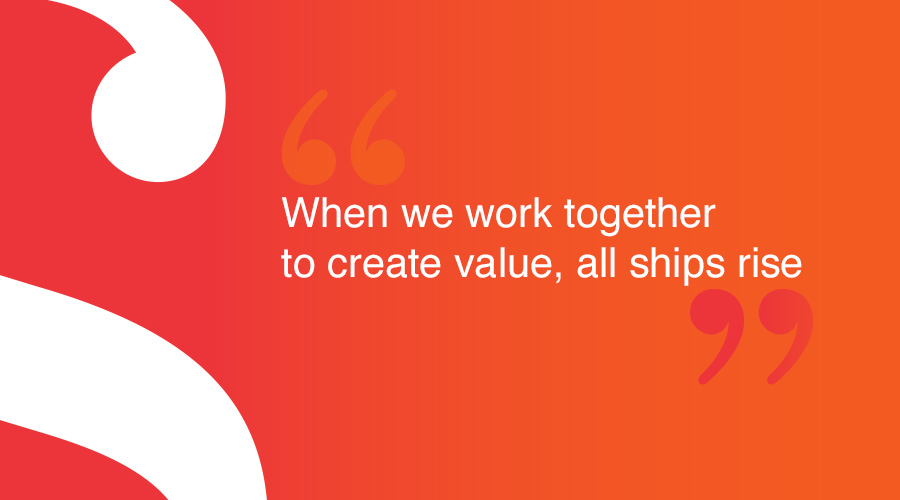In a recent blog, I shared a client meeting experience that ended with a bit of profanity over the sheer awesomeness of their analytics results. I remember being so proud and thinking, “Man, I want this experience for all of our clients.”
When I reflected on the yearlong efforts it took to arrive at that “bleeping” amazing meeting, I realized this whole data thing requires three big things. Three not-so-easy-lots-of-work-required things.
If you do not work for a marketing data company, I would advise seeking some support from experts. However, if you are trying to do this on your own, take into consideration the steps this client took to get the success they achieved.
Step 1: Build a Measurement Strategy
One of the first steps to doing data well is pulling together your stakeholders and hosting what we call a “Measurement Strategy Workshop.”
Just like a marketing strategy requires goals, audiences, messages, channels and tactics, a measurement strategy needs a similar level of rigor and thinking. In this workshop, you might want to:
- Define your goals. Real goals. Not “we want awareness” or “we want engagement,” but real goals that can be measured in numbers. Even if you aren’t strict about hitting them, I encourage you to set them.
- Identify who will see the data you collect. This is your internal audience. Ask yourself: Who are your stakeholders? What do they want to know? Are you sure? How often? What questions are they answering with that information?
- Consider your content and messaging. Are you including the right data sources to tell your story? Do you know what dimensions and measures you want to track to meet your key performance indicators (KPIs)? How will you aggregate and store this information so it’s readily available when you need it?
- Think about deliverables. What do your dashboards look like today? Is anyone reading them? How long do they take you? Can you make actionable decisions? What would be more useful?
Step 2: Streamline Data Efficiency
If you’re more advanced in your digital marketing efforts, you probably have at least one or two full time professionals churning out numbers and reports, likely more if you work for a sizeable organization. Many of our clients feel this level of manpower is not sustainable, especially if they are not seeing a return for the additional headcount.
At Simantel, we too needed to make better use of our analytics team’s work hours. For years, many of our clients required us to build reports in Excel or PowerPoint, which was an incredibly time intensive and manual effort. This past year, we’ve changed our approach. We’ve invested in a data warehouse with automated feeds to our clients’ data sources. We’ve also invested in a visualization tool called Tableau to make those reports (which we now refer to as dashboards) more easily understood. What’s cool about Tableau is that once the dashboards are built, a simple filter change of a date range, geography, or other variable can tell an entirely new story without recreating a new chart from scratch.
With savvy technology, and some pretty talented data scientists, you can really start to take off, using data to tell a compelling story to your stakeholders in a much more efficient and streamlined way.
Step 3: Ask for More Money
The last important element to consider before you embark on your data strategy is your budget. I’m not going to say that this process has to be expensive, but it’s not going to be cheap. If you are not spending 10 to 20 percent of your budget on marketing analytics already, you might want to reconsider how you’re allocating your marketing funds. Keep in mind, you’re not spending money just to measure – you’re spending money to know what’s working and hopefully do something about it. So start small, allocating 10 percent of your budget. As you learn what’s working and what’s not, you may consider increasing to 20 or 30 percent.
Beyond the initial investment, we also advise setting aside additional funds so that if the data tells you to change what you’re doing, you actually have money to do so. This could mean backing a new messaging approach, or a completely new media buy. If the opportunity calls, we want our clients to be ready.
Allocating budget to not only invest in measurement, but also make changes from the insights gained, will greatly impact your marketing success.
So that’s it. Just three things. A measurement strategy, a streamlined approach and some extra funds. If your organization can commit to those elements, you will see results. But keep in mind, this isn’t a one-and-done method. Just like anything we do in marketing, an effective approach to measurement takes time and continuous calibration.
If you’re patient and view this as a commitment, I believe that you too can have that amazing “bleeping” moment where it all comes together.





